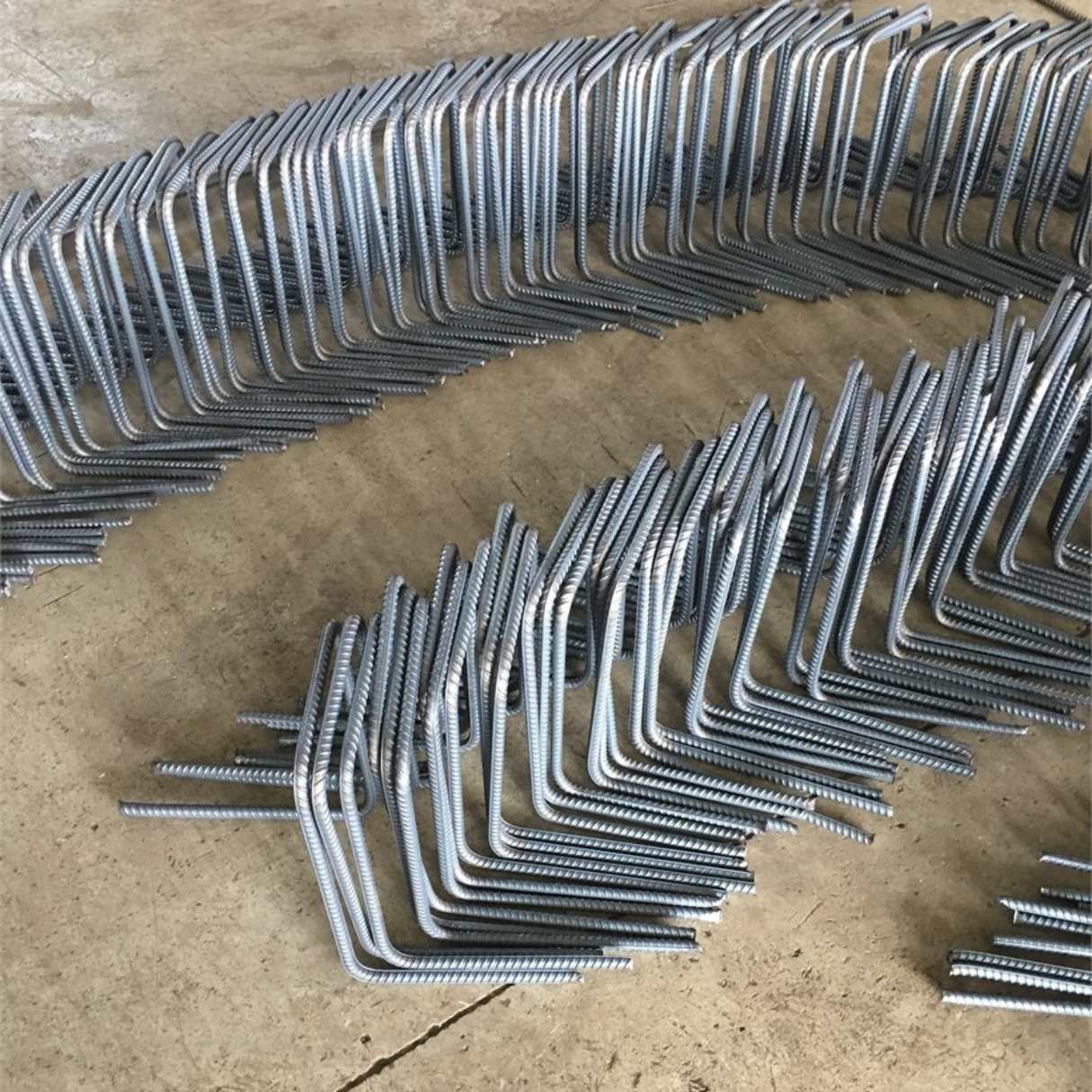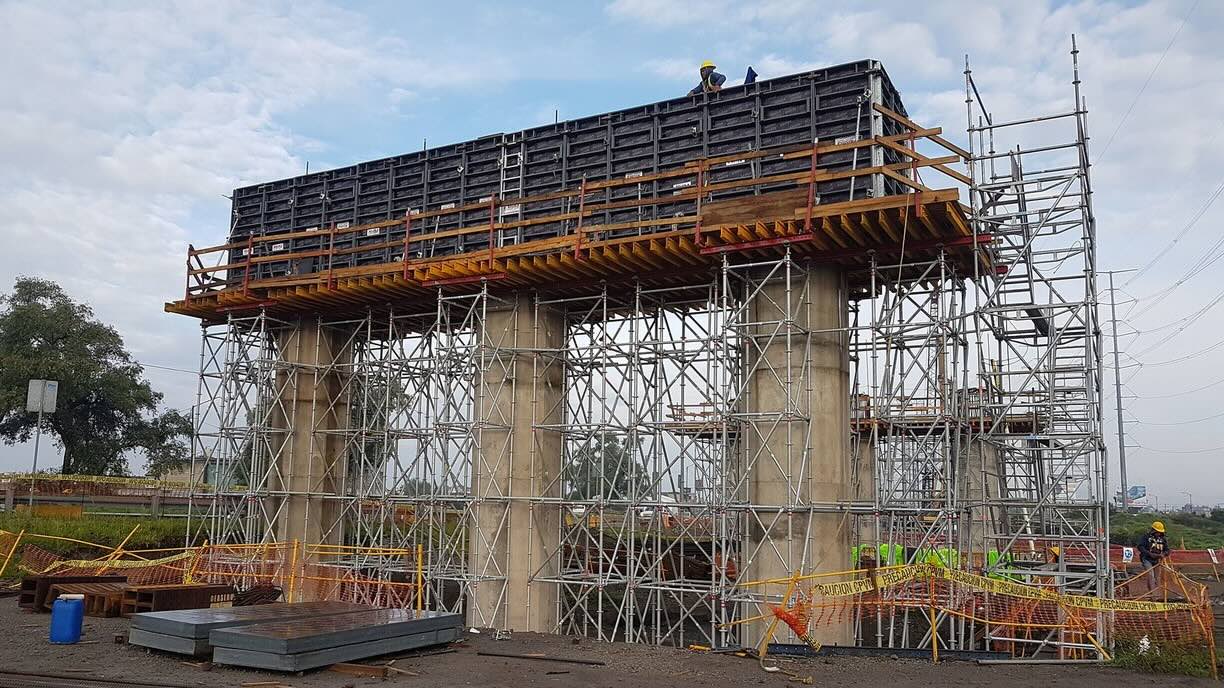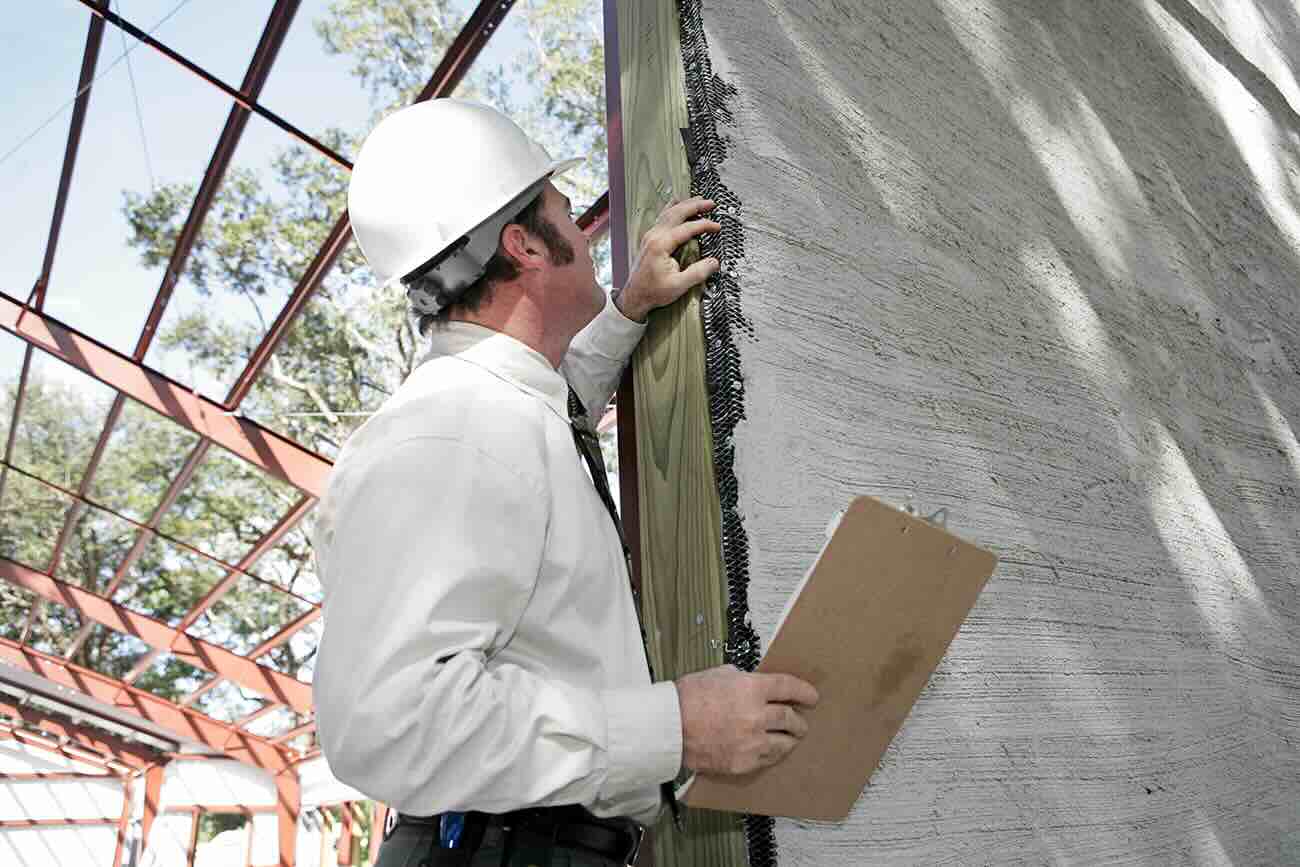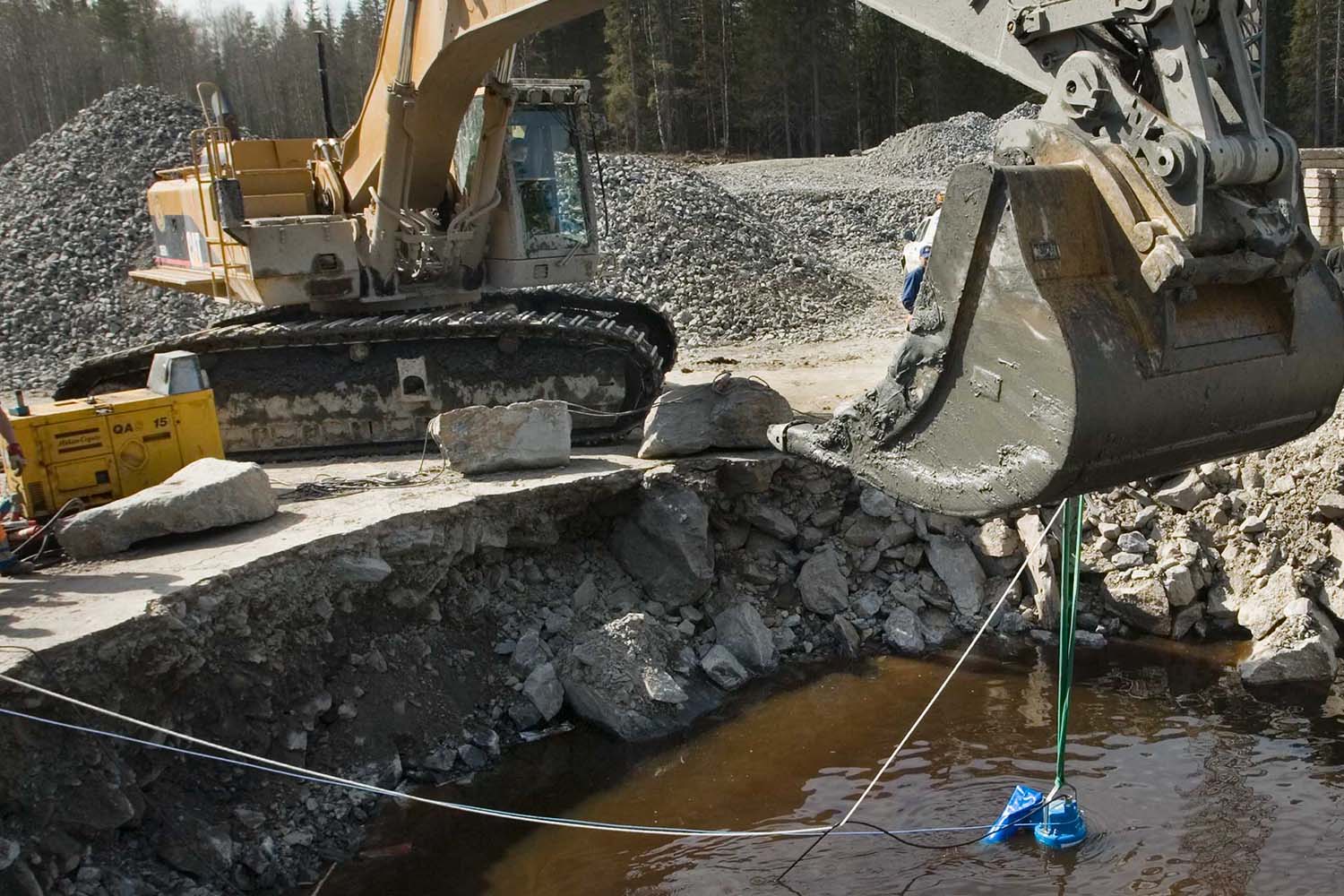Home>diy>Building & Construction>What Is A Construction Union


Building & Construction
What Is A Construction Union
Modified: January 24, 2024
Discover the benefits of joining a construction union and how it can enhance your building construction career. Find out why a construction union is essential in the industry.
(Many of the links in this article redirect to a specific reviewed product. Your purchase of these products through affiliate links helps to generate commission for Storables.com, at no extra cost. Learn more)
Introduction
A construction union plays a crucial role in the building and construction industry. It not only represents the interests of workers but also serves as a platform for collective bargaining, training, and professional development. In this article, we will explore what a construction union is, its historical context, the benefits of joining one, its role in collective bargaining, the training programs it offers, the challenges it faces, and how to become a member. We will also examine some successful projects undertaken by construction unions.
Construction unions have a long-standing history and have significantly shaped the construction industry. Their primary objective is to protect the rights and welfare of workers, ensuring fair wages, safe working conditions, and proper benefits. In addition, they serve as a training ground for aspiring construction workers, offering apprenticeship programs that provide hands-on experience and critical skill development.
Joining a construction union comes with a myriad of benefits. As a union member, workers have access to health insurance, retirement plans, and other fringe benefits. They also have representation during labor disputes, ensuring their voices are heard and their rights are protected. Construction unions also provide a sense of community and camaraderie, fostering a supportive environment for workers.
One of the most important roles of construction unions is their involvement in collective bargaining. Unions negotiate with employers on behalf of their members to establish fair wages, working hours, and other employment terms. This process ensures that workers have a say in shaping their working conditions. By leveraging their collective strength, unions are able to achieve better outcomes for their members.
Construction unions also play a crucial role in training and professional development. They offer apprenticeship programs that combine on-the-job training with classroom instruction, allowing individuals to acquire the necessary skills and knowledge to excel in the industry. These programs not only benefit new entrants to the construction field but also enable experienced workers to enhance their skills and advance their careers.
Key Takeaways:
- Construction unions advocate for fair wages, safe working conditions, and professional development. They offer benefits like healthcare coverage, retirement plans, and job security, fostering a supportive community for workers.
- Joining a construction union provides access to higher wages, comprehensive healthcare, and industry-recognized certifications. Unions negotiate collective bargaining agreements and offer training programs, contributing to career advancement and financial stability.
Read more: What Is Construction
Definition of a Construction Union
A construction union, also known as a trade union or labor union, is an organization formed by workers in the construction industry to represent their interests, protect their rights, and advocate for favorable working conditions. It is a collective entity that works towards improving the economic and social well-being of its members.
Construction unions are typically formed by workers who share a common occupation or trade within the construction industry. They encompass various skilled trades, including carpenters, electricians, plumbers, ironworkers, and more. These unions bring together workers at different levels of experience, from apprentices to journey-level professionals.
At its core, a construction union serves as a platform for workers to come together and advocate for their rights. It acts as a unified voice on behalf of its members, negotiating with employers to establish fair wages, benefits, and other workplace conditions. The union acts as an intermediary between the workers and the employer, ensuring that their concerns are addressed and their voices are heard.
In addition to collective bargaining, construction unions provide a range of services and benefits to their members. These include health and safety programs, pension plans, healthcare coverage, legal representation, job placement assistance, and access to various training and professional development opportunities.
Construction unions also engage in political activism and lobbying efforts to advocate for policies that benefit workers and the industry as a whole. They participate in discussions with government entities, industry associations, and other stakeholders to shape regulations, promote fair labor practices, and secure funding for construction projects.
While construction unions primarily represent the interests of workers, they also play a crucial role in fostering collaboration and cooperation within the industry. By bringing together workers from different trades and backgrounds, unions encourage networking, information-sharing, and mentorship to enhance the overall professionalism and expertise of their members.
It is important to note that joining a construction union is voluntary, and workers have the freedom to decide whether or not to become members. However, membership in a union offers a range of benefits and advantages, making it an attractive choice for many construction professionals.
History of Construction Unions
The history of construction unions dates back many decades and has been intertwined with the growth and evolution of the construction industry itself. The formation of construction unions can be traced back to the early 19th century when workers began to organize themselves to address issues such as low wages, dangerous working conditions, and long work hours.
One of the earliest construction unions in the United States was the International Brotherhood of Carpenters and Joiners, founded in 1881. This union sought to secure better wages and improved working conditions for carpenters and joiners across the country. Soon after, other construction trades followed suit, establishing their own unions to address the specific needs of their members.
Construction unions faced significant challenges during their early years, including fierce opposition from employers and legal barriers to collective bargaining. However, through solidarity and perseverance, union membership grew, and they became a powerful force in the construction industry.
Throughout the 20th century, construction unions played a pivotal role in shaping labor laws and working conditions. They fought for the implementation of safety regulations, fair wages, and the establishment of standard working hours. Construction unions were instrumental in improving workplace safety by advocating for protective gear, training programs, and the enforcement of safety standards.
The Great Depression of the 1930s posed a significant challenge for construction unions, as it led to a decline in construction projects and a rise in unemployment. However, unions adapted by diversifying their efforts and focusing on public infrastructure projects. This resulted in the creation of numerous construction jobs funded by government initiatives such as the New Deal.
The post-World War II period brought significant growth in the construction industry, leading to an increased demand for skilled workers. Construction unions played a vital role in meeting this demand by providing apprenticeship programs, training, and certifications. These programs not only ensured a steady supply of skilled workers but also improved the overall quality and professionalism in the industry.
However, construction unions faced challenges and controversies during the 1970s and 1980s. The industry experienced a decline, with fewer construction projects and increased competition. This led to strained labor relations, including disputes over wages and work conditions. Additionally, allegations of corruption and organized crime involvement in some construction unions tarnished their reputation.
In recent years, construction unions have focused on adapting to the changing landscape of the construction industry. They have embraced new technologies, sustainable practices, and innovative project delivery methods. Construction unions have also continued to play a vital role in ensuring fair and equitable working conditions for their members, advocating for worker rights, and supporting industry growth through training and apprenticeship programs.
Today, construction unions remain a driving force in the construction industry, advocating for the rights and welfare of workers, fostering collaboration among trades, and ensuring the industry’s continued growth and success.
Benefits of Joining a Construction Union
Joining a construction union can offer a multitude of advantages for workers in the construction industry. These benefits extend beyond just improved wages and include access to comprehensive health benefits, retirement plans, job security, professional development opportunities, and a support network within the industry. Let’s explore some of the key benefits of joining a construction union:
- Higher Wages: One of the major benefits of being a union member is the potential for higher wages. Unions negotiate collective bargaining agreements with employers to establish fair wages and ensure workers receive appropriate compensation for their skills and experience. This can lead to increased earning potential and better financial stability for union members.
- Healthcare Coverage: Most construction unions provide comprehensive healthcare coverage to their members, including medical, dental, and vision insurance. This ensures that workers and their families have access to quality healthcare, protecting them from high medical expenses and providing peace of mind.
- Retirement Benefits: Union members typically have access to retirement plans, such as pensions or employer-sponsored retirement savings accounts. These plans help create long-term financial security for workers by allowing them to save for retirement and ensure a comfortable future.
- Job Security: Union membership can provide a certain level of job security. Unions negotiate employment contracts that often include provisions for job protection, ensuring that members are not unjustly terminated or laid off without cause. This provides workers with peace of mind and stability in an industry known for fluctuating demand.
- Representation and Advocacy: Perhaps one of the most significant benefits of joining a construction union is having representation and a strong advocate for workers’ rights. Unions have the resources and expertise to represent their members’ interests in labor disputes with employers, ensuring fair treatment and protecting workers from exploitation.
- Training and Professional Development: Construction unions often provide extensive training and apprenticeship programs to their members. These programs help individuals develop the necessary skills and knowledge to excel in their respective trades. Continued education and professional development opportunities are also offered to members, allowing them to stay updated on the latest industry practices and technologies.
- Networking and Support: Joining a construction union provides access to a network of industry professionals who can offer guidance, mentorship, and support. This network can be invaluable for career advancement, job placement assistance, and building lasting relationships in the construction industry.
It is important to note that the specific benefits provided by construction unions may vary depending on the union and region. However, overall, joining a construction union offers numerous advantages that can significantly enhance a worker’s career, financial well-being, and overall quality of life in the construction industry.
Role of Construction Unions in Collective Bargaining
Collective bargaining is a process by which workers, represented by their union, negotiate with employers to establish terms and conditions of employment. This negotiation process allows construction unions to advocate for fair wages, safe working conditions, reasonable hours, and other benefits on behalf of their members. Let’s delve into the role of construction unions in collective bargaining:
Representation: Construction unions act as the collective voice of their members during collective bargaining negotiations. They represent the interests and concerns of the workers, advocating for their rights and striving to secure favorable employment terms. This representation ensures that workers have a say in shaping their working conditions and are not left powerless in dealing with employers.
Negotiation: Construction unions engage in negotiations with employers to establish collective bargaining agreements (CBAs). These agreements outline the terms and conditions of employment, including wages, working hours, benefits, and dispute resolution procedures. During negotiations, unions strive to achieve the best outcomes for their members, fighting for fair compensation and favorable working conditions.
Wage and Benefit Agreements: One of the primary goals of collective bargaining is to secure fair wages and benefits for workers. Construction unions negotiate with employers to establish industry-standard or above-average wages that reflect the skills, experience, and demands of the trade. They also work to secure comprehensive benefit packages, including healthcare coverage, retirement plans, and other fringe benefits, for their members.
Workplace Safety and Health: Construction unions recognize the importance of safe and healthy working conditions. During collective bargaining, unions advocate for strong safety measures and protocols to ensure the well-being of workers. They fight for the implementation and enforcement of safety regulations, as well as the provision of necessary protective equipment and training to mitigate workplace hazards.
Dispute Resolution: In the event of labor disputes or conflicts between workers and employers, construction unions play a vital role in resolving these issues. They utilize the grievance procedures outlined in the collective bargaining agreements to address workplace concerns, ensuring due process and fair resolutions. The union represents workers in arbitration or other legal proceedings if necessary.
Industry Advocacy: Construction unions go beyond individual workplace negotiations and play a broader role in advocating for the rights and welfare of workers in the industry as a whole. They engage in industry-wide discussions and collaborate with other unions, employers, and government entities to set industry standards, promote fair labor practices, and shape regulations that benefit workers.
Continual Monitoring and Enforcement: Construction unions actively monitor and enforce the provisions outlined in the collective bargaining agreements. They ensure that employers adhere to the agreed-upon terms and take action when violations occur. This ongoing monitoring and enforcement help maintain the integrity of the negotiated agreements and protect workers’ rights.
Overall, construction unions play a crucial role in collective bargaining, enabling workers to have a voice and a seat at the table when it comes to establishing fair wages, safe working conditions, and other important employment terms. Through negotiation, representation, and advocacy, construction unions strive to improve the lives of their members and create a fair and equitable construction industry.
Joining a construction union can provide you with access to better wages, benefits, and job security. It also offers opportunities for training and career advancement in the industry.
Read more: What Is Retrofit In Construction
Training and Apprenticeship Programs Offered by Construction Unions
Construction unions are not solely focused on protecting workers’ rights and negotiating employment contracts. They also play a crucial role in training and developing a skilled workforce in the industry. Construction unions offer comprehensive training and apprenticeship programs designed to equip individuals with the skills and knowledge necessary to excel in their respective trades. Let’s explore these programs in more detail:
Apprenticeship Programs: Construction unions often provide apprenticeship programs that combine classroom instruction with on-the-job training. These programs are typically offered to individuals who are new to the industry and want to learn a specific trade, such as carpentry, electrical work, plumbing, or ironworking. Apprentices work alongside experienced professionals and receive hands-on training while also attending classes to develop their theoretical knowledge.
Structured Learning: Apprenticeship programs offered by construction unions follow a structured curriculum that encompasses both practical skill development and theoretical knowledge. The curriculum is designed to provide a well-rounded education in the trade, covering topics such as safety protocols, construction techniques, blueprint reading, and industry regulations. By following a structured learning path, apprentices gain a solid foundation in their trade.
Mentorship: Apprentices in construction union programs have the benefit of working closely with experienced professionals who serve as mentors. These mentors provide guidance, support, and on-the-job training to apprentices, helping them refine their skills and navigate the complexities of the construction industry. The mentor-mentee relationship fosters a culture of growth and continuous learning.
Industry-Recognized Certifications: Completion of an apprenticeship program through a construction union often leads to industry-recognized certifications or journey-level status. These certifications validate an individual’s skill level and knowledge in a particular trade, opening up further career advancement opportunities both within the union and in the broader construction industry.
Continuous Professional Development: Construction unions understand the importance of staying up to date with advancements in the industry. As a result, they regularly offer continuing education and professional development opportunities for their members. These opportunities may include workshops, seminars, and trainings on new construction techniques, emerging technologies, sustainable practices, and safety protocols. Continuous professional development ensures that union members remain current and competitive in the ever-evolving construction industry.
Job Placement Assistance: Many construction unions offer job placement assistance to their apprentices and members. They have established relationships with employers in the industry and can help connect apprentices with job opportunities upon completion of their training programs. This support in finding employment helps apprentices jumpstart their careers and transition successfully into the workforce.
Networking and Industry Connections: Joining a construction union and participating in apprenticeship programs provides apprentices with access to a network of industry professionals. This network allows for valuable connections and networking opportunities, which can be instrumental in finding employment, receiving mentorship, and building relationships with other construction workers and contractors.
Construction unions’ commitment to providing comprehensive training and apprenticeship programs demonstrates their dedication to cultivating a skilled workforce. By offering structured learning, mentorship, certifications, continuous professional development, job placement support, and networking opportunities, construction unions contribute significantly to the growth and success of their members and the construction industry as a whole.
Challenges Faced by Construction Unions
While construction unions play a vital role in protecting the rights and welfare of workers in the construction industry, they also face a range of challenges that impact their operations and effectiveness. These challenges arise from various factors, including changes in the industry, economic fluctuations, legal hurdles, and evolving labor dynamics. Let’s explore some of the key challenges faced by construction unions:
- Employer Opposition: Construction unions often encounter resistance from employers who may view unions as a threat to their profitability or decision-making authority. Some employers may actively oppose unionization efforts, making it challenging for unions to gain a strong foothold in certain workplaces or sectors of the industry.
- Legal Restrictions: Construction unions must navigate complex legal frameworks that govern labor relations and collective bargaining. These legal restrictions, such as right-to-work laws, can impact the ability of unions to collect dues, represent workers, and engage in effective bargaining with employers.
- Economic Fluctuations: The construction industry is prone to economic cycles that can impact job availability and stability. During economic downturns or periods of reduced construction activity, unions may face layoffs or reduced membership, leading to financial challenges and decreased bargaining power.
- Competition: Construction unions face competition from non-union contractors and workers. Non-union contractors may offer lower costs for projects, making it difficult for unions to secure work or negotiate favorable contracts. Non-union workers may also choose not to join unions, which can impact union membership levels and influence within the industry.
- Changing Workforce Dynamics: The construction industry is experiencing a demographic shift as older, experienced workers retire and a younger generation enters the workforce. Construction unions must adapt to the needs and preferences of this new generation of workers, who may hold different expectations regarding work-life balance, career development, and union membership.
- Public Perception: Construction unions sometimes face the challenge of negative public perception. Negative portrayals in the media or perceptions of union inefficiencies or corruption can impact public support for unions and hinder their ability to attract new members or garner public sympathy during labor disputes.
- Technological Advancements: The construction industry is undergoing rapid technological advancements and innovations. Construction unions must adapt to these changes and ensure that their members are equipped with the necessary skills and knowledge to work with new technologies. Failure to do so could lead to a mismatch between labor supply and industry demands.
Despite these challenges, construction unions continue to evolve and find ways to address the changing needs of their members and the industry. They embrace new technologies, engage in strategic organizing efforts, collaborate with community organizations, and adapt their training and development programs to remain relevant and effective in the ever-evolving construction landscape.
By acknowledging and actively addressing these challenges, construction unions can continue to uphold their mission of protecting and advancing the interests of workers, ensuring fair wages, safe working conditions, and improved job opportunities in the construction industry.
How to Join a Construction Union
Joining a construction union offers numerous benefits and opportunities for individuals in the construction industry. If you are interested in becoming a member of a construction union, here are some steps to guide you through the process:
- Research the Union: Begin by researching different construction unions in your area or the industry you specialize in. Look for unions that represent your trade or occupation and align with your values and goals. Visit their websites, read about their mission, values, and membership requirements. Research their history, reputation, and the services they offer.
- Contact the Union: Reach out to the construction union you are interested in joining. Contact their local office or representative to inquire about membership and express your interest in joining. They can provide information about the application process, membership requirements, and any specific qualifications needed for your trade.
- Attend Information Sessions: Many construction unions hold information sessions or orientation programs for potential members. Attend these sessions to learn more about the benefits, services, and opportunities offered by the union. It is an opportunity to ask questions, clarify any doubts, and understand your rights and responsibilities as a union member.
- Submit an Application: Once you have gathered the necessary information and are ready to proceed, submit an application to the construction union. The application typically requires personal information, work history, and information about your trade or occupation. Follow the instructions provided by the union to complete and submit the application accurately.
- Pay Dues and Fees: Upon acceptance of your application, you will be required to pay initiation fees and ongoing membership dues. Initiation fees are one-time payments, while membership dues are recurring payments that are typically paid monthly or quarterly. These fees and dues contribute to the funding of union activities and services.
- Attend Orientation and Training: After joining a construction union, you may be required to attend an orientation session or training programs specific to your union. These sessions provide information about your rights and responsibilities as a union member, introduce you to other members and union officials, and familiarize you with the resources and benefits available to you.
- Get Involved: Joining a construction union is not just about enjoying the benefits; it also involves active participation. Attend union meetings, get involved in committees, and contribute to the union’s activities and events. This engagement helps strengthen the union and allows you to have a voice in shaping the union’s agenda and priorities.
It’s important to note that the specific process and requirements for joining a construction union may vary depending on the union and region. It’s recommended to reach out to the specific union you are interested in joining to get detailed information about their application process and membership requirements.
By following these steps and actively participating in your chosen construction union, you can enjoy the numerous benefits, support, and opportunities that come with being a member. You’ll also contribute to the collective strength and voice of the union, ensuring that workers in the construction industry are protected, respected, and well-represented.
Case Studies of Successful Construction Union Projects
Construction unions have been involved in numerous successful projects that demonstrate their impact on the industry. These projects showcase the collaborative efforts between unions, contractors, and workers to deliver high-quality work and create positive outcomes. Let’s look at a few case studies of successful construction union projects:
- The SoFi Stadium, Los Angeles: The construction of the SoFi Stadium, a multi-purpose sports and entertainment venue located in Inglewood, California, is an excellent example of a successful construction union project. Unions, including the Building Trades Council of Los Angeles and Orange Counties, worked in collaboration with contractors, ensuring the project was completed on time and to the highest industry standards. Union workers provided skilled craftsmanship and expertise, contributing to the successful construction and timely completion of this iconic stadium.
- The High Line, New York City: The High Line, an elevated linear park in Manhattan, New York City, exemplifies the positive impact of construction unions on urban redevelopment projects. Union labor played a significant role in transforming the disused railway tracks into a vibrant public space. The collaboration between construction unions, contractors, and designers resulted in a successful project that has become an iconic destination for both residents and tourists, revitalizing the surrounding neighborhood.
- The Transbay Transit Center, San Francisco: The construction of the Transbay Transit Center in San Francisco showcased the importance of construction unions in delivering large-scale infrastructure projects. The project involved numerous skilled trades, including ironworkers, electricians, carpenters, and plumbers, who were union members. The collaboration between the unions and project stakeholders ensured the successful completion of this modern transportation hub, providing improved public transportation options for commuters in the Bay Area.
- The Boston Green Line Extension, Massachusetts: Construction unions played a pivotal role in the successful completion of the Boston Green Line Extension project. Unions such as the Laborers’ International Union of North America and the International Brotherhood of Electrical Workers worked together with contractors to construct new subway stations and extend the city’s light rail system. The project provided job opportunities for union workers and enhanced public transportation, benefiting the community for years to come.
- The Hudson Yards Redevelopment, New York City: The Hudson Yards development in New York City, one of the largest private real estate projects in the country, demonstrated the positive impact of construction unions on large-scale urban redevelopment. Unions worked alongside contractors and developers to construct state-of-the-art office buildings, residential towers, and public spaces. Union labor ensured quality craftsmanship, adherence to safety protocols, and the delivery of a world-class project that has transformed the city’s skyline and economic landscape.
These case studies highlight the collaborative nature of construction union projects and their contribution to the successful delivery of significant construction endeavors. Construction unions provide skilled and experienced workers, promote adherence to labor standards, and foster a collaborative approach that benefits workers, contractors, and the community at large.
By working together, unions and contractors can create sustainable employment opportunities, deliver projects on time and within budget, and create lasting legacies that enhance the built environment and improve the quality of life for individuals and communities.
Read more: What Is Stucco In Construction
Conclusion
Construction unions play a vital role in the building and construction industry, serving as the collective voice of workers and advocating for their rights and interests. Through collective bargaining, construction unions negotiate fair wages, safe working conditions, and other employment terms, ensuring that workers are treated with dignity and respect. They also provide comprehensive training and apprenticeship programs, fostering the development of skilled workers and enhancing the professionalism of the industry.
Joining a construction union offers numerous benefits, including higher wages, healthcare coverage, retirement benefits, job security, and access to training and professional development opportunities. Construction unions serve as a support network, providing mentorship, networking opportunities, and a sense of community among workers in the industry.
While construction unions face challenges such as employer opposition, legal restrictions, economic fluctuations, and changing workforce dynamics, they continue to adapt and evolve to meet the needs of their members and the industry. Through strategic organizing efforts, technological advancements, and active engagement in industry-wide initiatives, construction unions contribute to the growth and success of the construction industry.
The case studies of successful construction union projects demonstrate the positive impact of unions on the industry. Collaborative efforts between unions, contractors, and workers have resulted in the successful completion of iconic stadiums, urban redevelopment projects, transportation hubs, and large-scale infrastructure developments. These projects showcase the quality craftsmanship, skilled labor, and commitment to excellence that construction unions bring to the table.
In conclusion, construction unions play a significant role in advocating for workers, shaping employment conditions, and fostering a skilled workforce in the construction industry. By joining a construction union, individuals can enjoy the benefits, support, and opportunities that come with membership, contributing to their own professional growth and the collective strength of the union. As the construction industry continues to evolve, construction unions will remain essential in ensuring fair and equitable working conditions, creating a sustainable future for workers and the industry as a whole.
Frequently Asked Questions about What Is A Construction Union
Was this page helpful?
At Storables.com, we guarantee accurate and reliable information. Our content, validated by Expert Board Contributors, is crafted following stringent Editorial Policies. We're committed to providing you with well-researched, expert-backed insights for all your informational needs.














0 thoughts on “What Is A Construction Union”